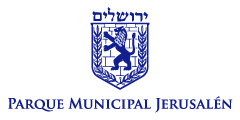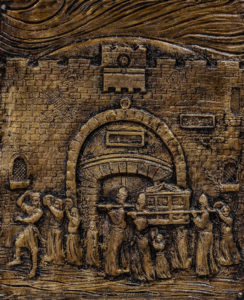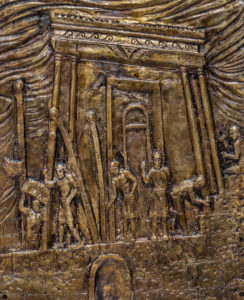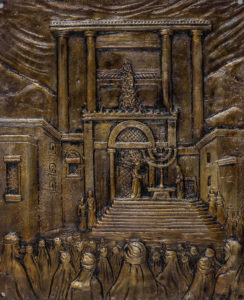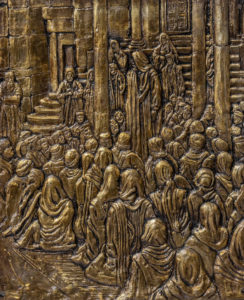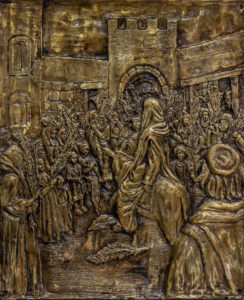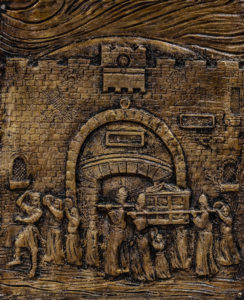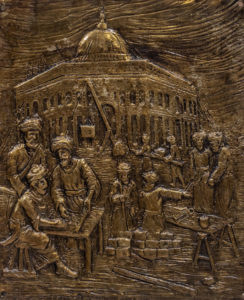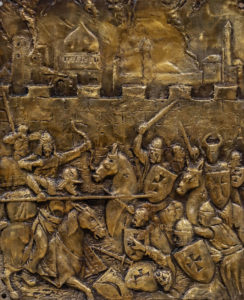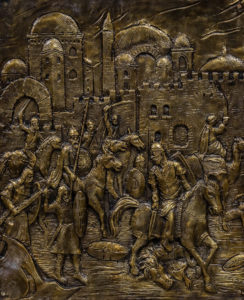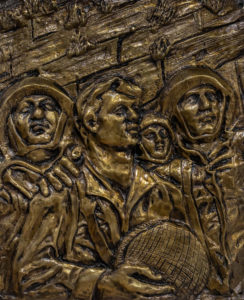The monument consists of a staircase with 18 plaques that, as you ascend, tell the history of Jerusalem and its connection to Christianity, Judaism and Islamism; there is a menorah (candelabra) at the top.
At the beginning of the monument one can see the story of how God asked Abraham for proof of his faith, Abraham prepared to sacrifice his son; God stopped him and sent him a lamb to sacrifice. Human sacrifice was then strictly forbidden. It was on this same hill, where approximately 690 years later, King Solomon built the First Temple.
Further along, there is the plaque that pays tribute to King David, who is considered the founder of Jerusalem as the capital of the Kingdom of Israel. It is here where they relocated the tabernacle with the Ten Commandments, calling the city “Ir David,” City of David. King David is also associated with the star with his name, one of the most important identity symbols of the Hebrew culture. The star also represents the union between heaven and earth. It is precisely because of the latter that the Star of David evokes and simultaneously reinforces the sealed Covenant between God and Abraham. The star is known as Star of David in every language, except in Hebrew where it is known as «Magen David», Shield of David.
Moving ahead, one can see the monument that shows King Solomon building the First Temple. Then the story continues until it reaches the life of Jesus, his visit to the Temple, his triumphal entry on Palm Sunday, and finally, his crucifixion.
One can also find the destruction of Jerusalem and the Temple by the Romans, the construction of the Al-Aqsa Mosque on the ruins of the Temple in the year 691 CE, and plaques with the conquests by the Muslims and with images of the crusades.
Plaques
The history of Jerusalem is told in 18 bronze cast plaques.
Menorah
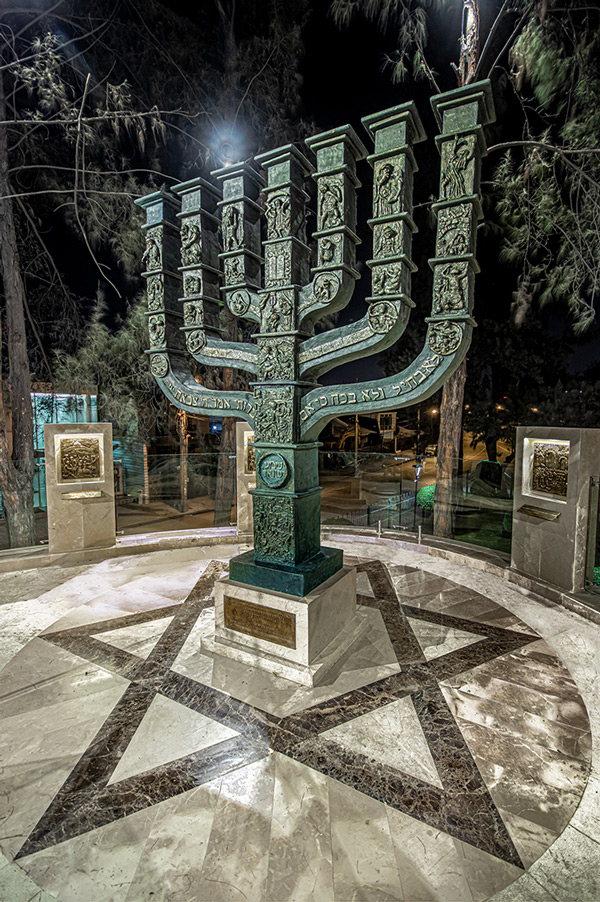
There is a large candelabra at the top of the monument, which is described in Exodus 25:31-40
31 “Make a lampstand of pure gold. Hammer out its base and shaft, and make its flowerlike cups, buds and blossoms of one piece with them.
32 Six branches are to extend from the sides of the lampstand—three on one side and three on the other.
37 “Then make its seven lamps and set them up on it so that they light the space in front of it.
The presence of echoes and variations of the Menorah of the Temple of Jerusalem in some Christian churches constitutes a symbol of inclusion; and on the religious experience level, the seven-arm candelabra expresses a desire for radiance, hope and continuity.
In some cases the Menorah, the seven-arm candelabra, is found in some churches, where it is also possible to see it during the Eucharistic celebration. On this candelabra there is an engraved text in Hebrew that says:
This is the word of the Lord to Zerubbabel, which quotes: “Not by might nor power, but by My Spirit” – says the Lord of hosts. Zechariah 4: 1–7
This monument is a replica made by Ecuadorian artist Fernando Insua, of the Menorah designed by Benno Elkan and given by the United Kingdom Parliament to the Parliament of Israel (Knesset) as a tribute to the eighth anniversary of its independence in 1956.
The Menorah of the Knesset was inspired by the golden candelabra that was in the Temple of Jerusalem. It shows 30 bronze reliefs of formative events, images and significant concepts of the Bible and history.
